The First Post
First things first, welcome to my blog, I guess? It’s been many years since I’ve done any sort of blogging or “formal” writing, To be perfectly honest, I’m not all that sure what I want to get out of trying my hand at it again, I have no serious plans regarding what I want to write about, and I don’t really know how much I’m going to be keeping up with this.
But, here I am, and for the time being I have things on my mind relating to a resurging interest of mine: film photography.
Apologies in advance for the how long this post is, but sometimes you just end up writing many words. So let’s get to the next of the firsts.
The First Experience
I’ve been doing photography 15ish plus years now, both as a hobby and as employment as a freelancer. As a millenial, I remember a time when film was the only photo capturing medium and it was a common occurrence to take plastic disposable cameras with us on family vacations. Once I began to take a more serious interest in photography in my 20s, digital photography had pretty much already taken over. As such, I never really had any serious experience with shooting on film, and digital SLRs were essentially the only photographic tools I knew.
Neither an old Nikkormat film SLR once belonging to an uncle that ended up in my hands nor a well-kept Voigtlander Bessa R4M film rangefinder that my brother gave me managed to light more than a moderate spark of inspiration to shoot more film.
What DID spark the inspiration to shoot more film was an old Mamiya M645 1000s that I bought during 2021. I had never shot with a medium format camera before, film or digital, but the allure of a format larger than the ubiquitous full frame was strong. But nothing, not the knowledge that the negative would be huge compared to 35mm, not the hipster retro cool, none of that would compare to the wow factor I felt when I looked down through the waist-level viewfinder at the enormous ground glass focusing screen for the very first time.
The huge viewfinder (compared to my experiences with digital SLR viewfinders) and the mirrored left-right and rotational movement due to the waist-level finder completely threw my brain for a loop. It felt to me like a totally new way of taking pictures, and I fell in love with it. Everything about photography felt new and fresh again like it was the first time.
The First Mistake
I recently made my very first attempt at developing black and white film on my own at home. I’d been told that it’s a fairly easy process and that it mainly just involves buying and mixing the chemicals, swishing the film around in the chemicals for the right amount of time, easy peasy. I wanted to start developing my own black and white for an artistic reason (to control the entire creative process of capturing the picture onto the film and then making the picture appear by developing it myself) as well as for a practical reason (the cost to develop each roll is several orders of magnitude cheaper at home vs. taking it to a lab, literally cents vs. dollars).
On the day when I decided to try developing my first roll, I had all the chemicals, measuring beakers, and other materials prepared and ready to go. I knew that there should really only be one difficult obstacle in my way: loading the film onto the plastic developing reel. With film being a light-sensitive material, one has to handle it in complete darkness. At home, this means a darkroom or a changing bag, which is essentially a big bag that you can chuck the film, developing tank, and developing reel into and then zip it up in order to make it a light-proof environment. It’s got two holes for you to stick your arms through in order to handle all the materials inside without exposing the film to light.
I had heard stories about how difficult it can be to take the film, unspool it, and slide it into the developing reel, all while being totally unable to see what you’re doing with your hands. Let me tell you, they were not kidding. I think I spent maybe an hour with my arms inside that changing bag trying and failing to get my film onto that damned plastic reel. I’d get the film partially on, then accidentally get the film crinkled and twisted while trying to ratchet it onto the reel further. Or I would find myself thinking that I had successfully gotten the film fully into the reel, only to feel around blindly with my hands and find that I had made literally zero progress and that the leading edge of the film was still at the entry point of the reel.
Once I “succeeded” in getting my film fully into the developing reel and then into the tank, I was able to do the easy part with the chemicals. What awaited me once the chemicals had done their thing, however, was a properly developed but horribly scratched up negative. Needless to say, I was pretty frustrated and upset at my mistake.
Thankfully, once I scanned and converted the negatives, the scratches didn’t look quite so bad. Maybe it’s just the fact that film itself is an imperfect analog medium, but in a way the scratches weirdly add a sort of natural vintage quality. Or maybe that’s just what I told myself in order to lessen the pain of the mistake.
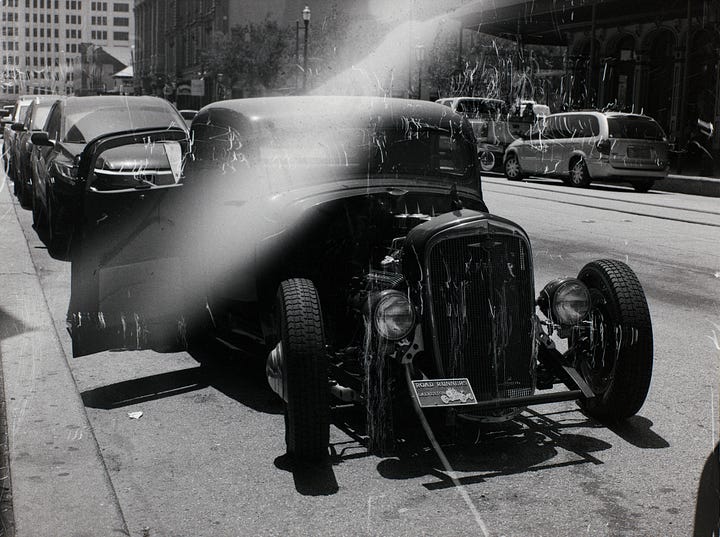
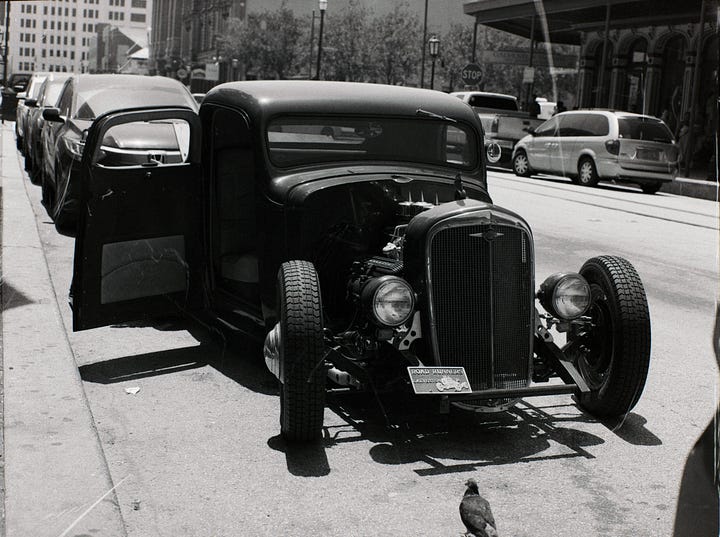
Still, I obviously don’t ever want a repeat of that hour of frustration attempting to get the film onto the reel and the subsequent scratched up negatives. I took it as a learning experience, dug up a few more tips online, and gave it a second go a few days later with another roll of film.
Some of the tips I found didn’t seem as helpful as advertised, like sticking a folded up slip of paper into the developing reel in order to provide more of a guide to slide the film on. That little slip of paper proved to be useless to me, and I pretty quickly tossed it aside within the void of the changing bag. Other tips proved to be hugely helpful, such as wearing nitrile gloves and long sleeves in order to keep the film dry and free of oils from my skin. Thankfully, I had a much easier time loading my second roll of film and it emerged from the development tank essentially clean and scratch-free.
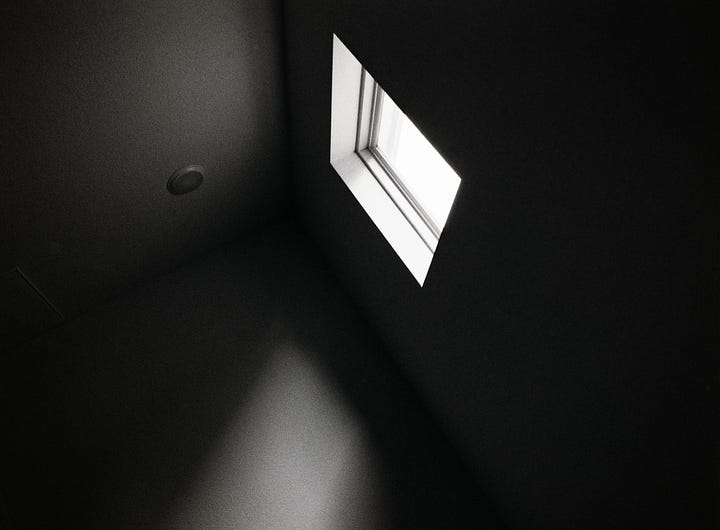
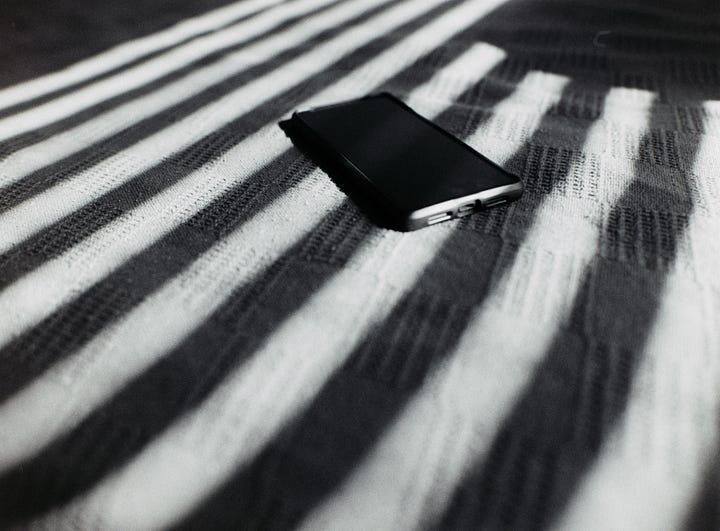
I wish I had spent more time researching those tips before tossing my first roll of film into the chemical soup, and I wish I had made that first attempt with a less important roll, a throwaway one reserved for that first try. But as the ancient wisdom says, you live and you learn from your mistakes, and if the second roll is any indication I did indeed learn and significantly improve upon the mistakes of my first try. The improvement I saw in the second roll of film definitely has me excited for my future endeavors with black and white film.
What Now?
As referenced in the first section, I don’t really know how much I’ll be blogging and I don’t have grand overarching plans for what to do with it. I do, however, have one idea in mind for my next post. Once again, it will relate to my recent forays into film photography.
But until then, thus ends my first post here. Cheers!


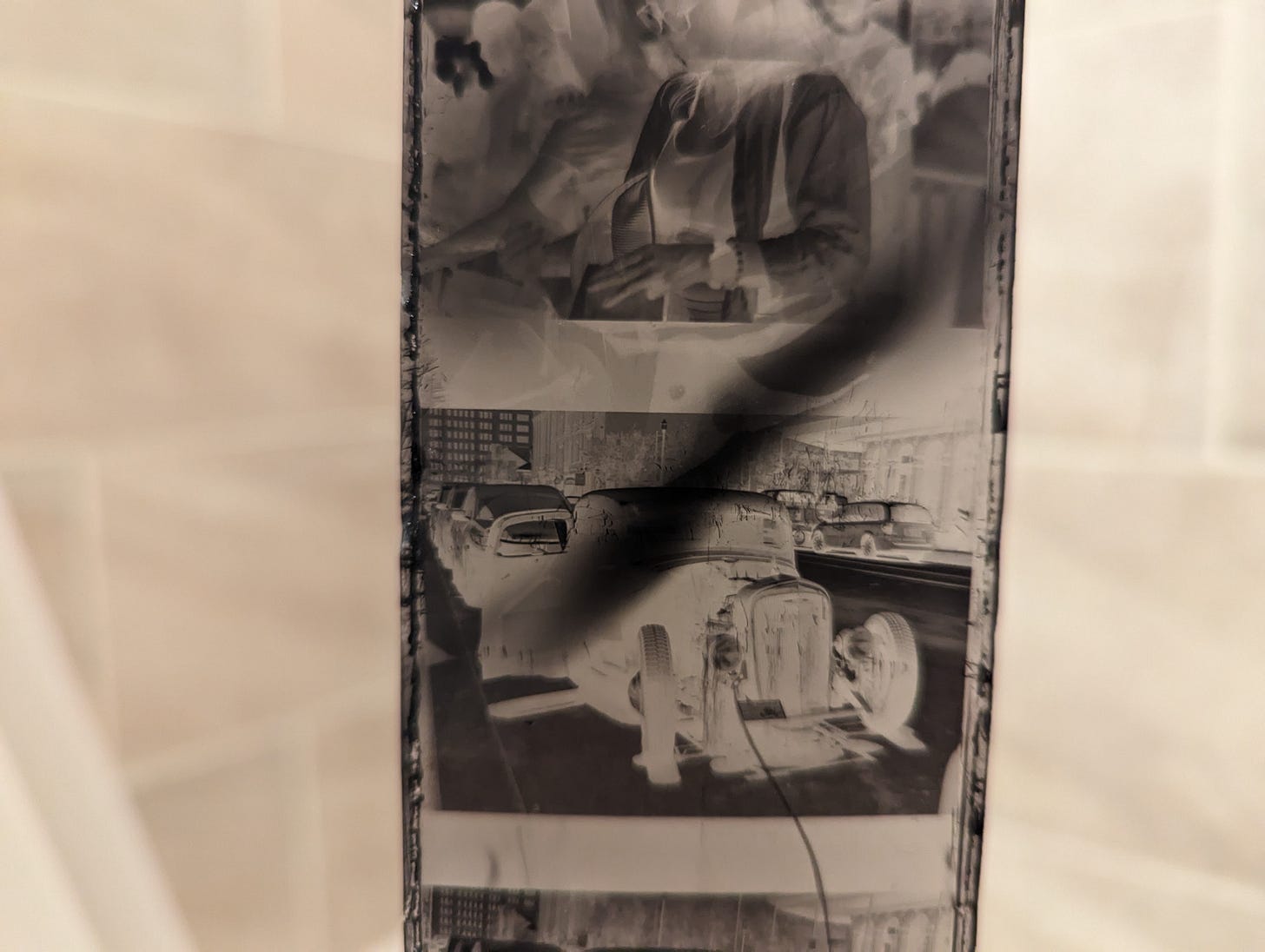
Omigosh, I love this. I opted for dropping off my rolls at a photo store, but this control over film development & scanning sounds a lot more satisfying. Can't wait to see more of your photos!